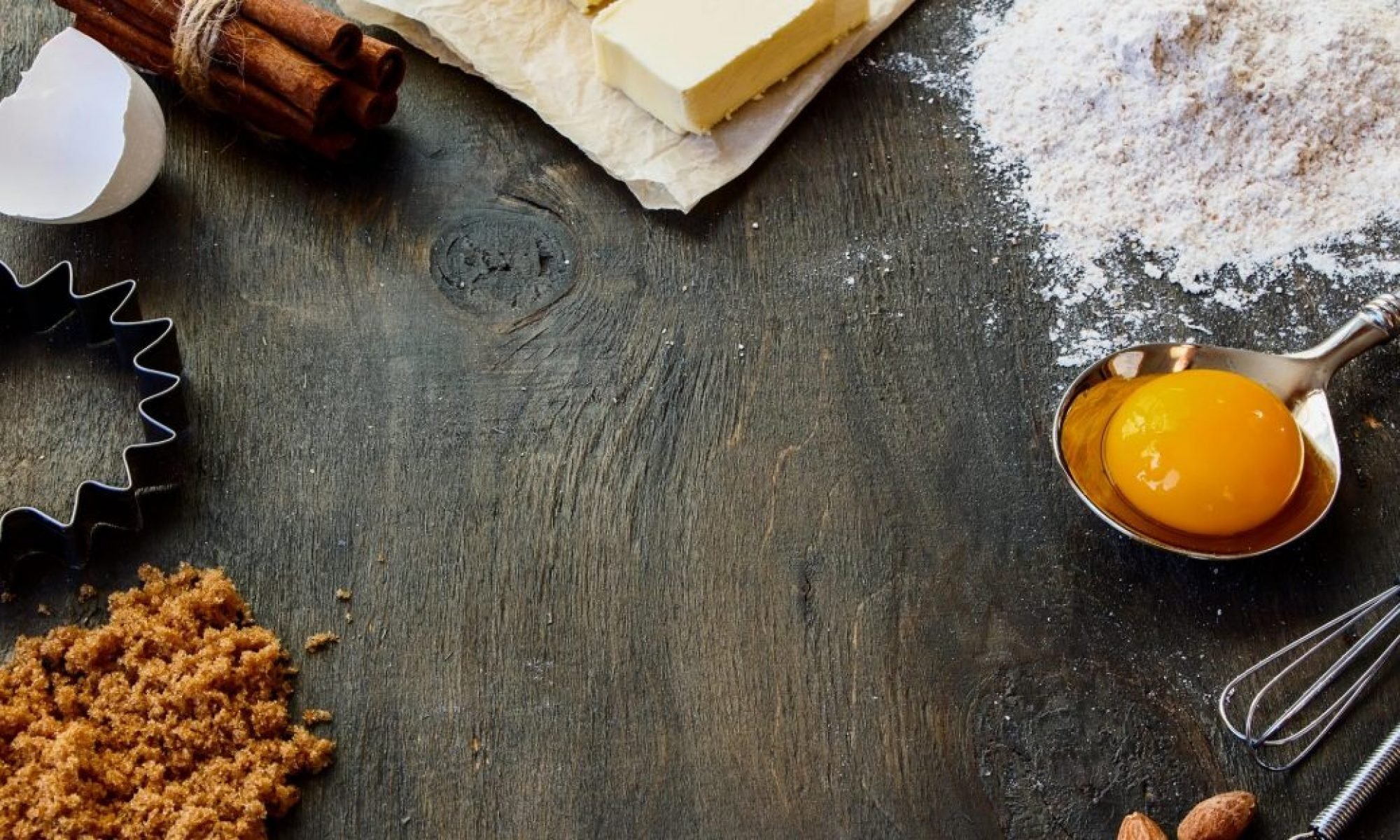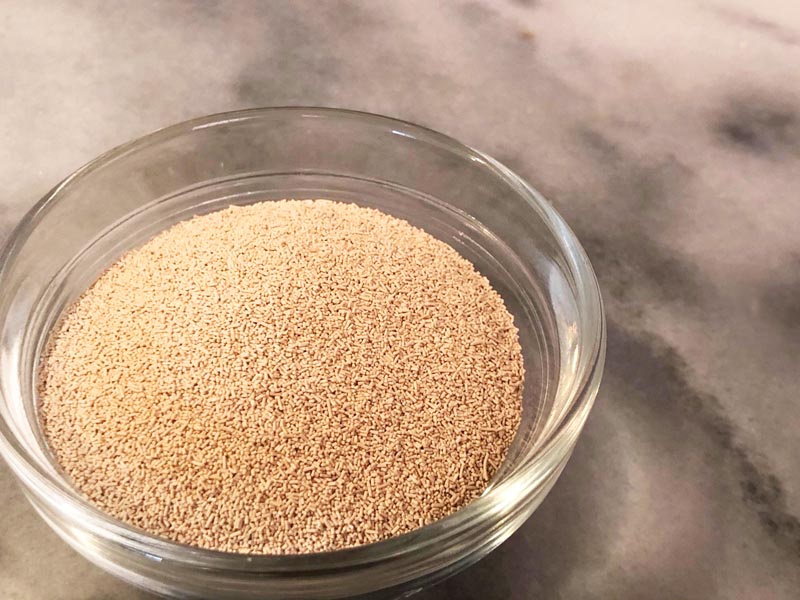Yeast. Without it, bread, cinnamon rolls, and other sweet doughs wouldn’t be the same. Yeast has the same effects in traditional baking as it does in gluten free baking. However, there are advantages of using a particular yeast over another in both gluten and gluten-free baking. Learn which variety of yeast produces faster and light gluten free baked goods, when to use each yeast, and which are gluten free.
The Types of Yeast:
Fresh: Fresh yeast is not gluten free.
Active: Active yeast is excellent in recipes calling for at least two rises.
Instant: Instant yeast, also known as rapid-rise or fast-acting, is just that, it activates and begins creating air pockets in doughs and batters instantly.
Wild: Wild yeast is in the air. It is wild yeast that begins to ferment a sourdough starter. (There are three sourdough starters recipes on the website. The above-linked brown rice starter recipe is the best.) Depending upon your location will depend upon what strain(s) of yeast will be in your sourdough starter. This is the reason San Francisco sourdough bread is popular. It contains a particular flavor due to the strain of bacteria in the air (wild yeast).
Gold Instant: Most yeast manufacturers offer a yeast best used in sweet bread like brioche. Such dough is filled with additional fat like butter and more sugar than other doughs. The SAF manufacturer of yeast offers a Gold variety for sweet dough. Gold Instant contains more active ingredients to get that additional rise going for such heavy dough. This type of yeast helps you achieve that tender and soft dough you’re trying to create.
Nutritional: Nutritional yeast is unlike any of the above yeasts. Nutritional yeast while technically a yeast, does not perform like the others. Vegans and those allergic to dairy use nutritional yeast in recipes to provide a cheesy-nutty flavor. Its existence is simply for its health benefits of which are vitamins, minerals, protein, and fiber. Nutritional yeast also adds a yellow color to food similar to turmeric. Watch out for cross-contamination of gluten in some nutritional yeast brands.
Brewer’s: Brewer’s yeast is also a yeast not used in baking. Instead, it is used in the brewing of beverages such as beer. In most cases, brewer’s yeast contains gluten. However, recently, there are some makers of gluten free brewer’s yeast. Some people take brewer’s yeast as a supplement for its richness in minerals like selenium and chromium. Again, brewer’s yeast is not meant for baking. However, gluten-free beer is an asset to gluten free batter frying.
What Brand of Yeast Do You Recommend?
I have much success in using SAF brand yeast in particular, their instant yeast. Many bloggers and bakers are also pleased with this brand. A popular alternative is Red Star. Fleischmann’s is also gluten free, but I have not used it. All of the above brands of yeast are gluten free.
How Does Yeast Work?
When given time to ferment, yeast consumes sugars and releases carbon dioxide, which creates bubbles in dough and batters. When making gluten dough, kneading the dough creates stability for those bubbles and encapsulates them until the dough is baked. In gluten free baking, we add things like gums, plenty of eggs, and flours (not starches) to provide the same stability. As the bubbles form within the dough, the gas is encased by stretchy dough. Then, as the dough bakes, the gas expands and any water in the dough turns into steam, also rising the dough. Baking sets the dough, evaporating much of the liquid and leaving the gas bubbles set into place. Then upon cooling, some of that steam escapes or evaporates as it cools.
What Causes Yeast-Based Baked Goods to Collapse?
If you don’t bake something long enough, whether gluten or gluten free, the structured dough doesn’t set and collapses/falls upon moving or cooling. The same thing can happen if you add too much liquid to a recipe. The more liquid you add, the more gas bubbles form. The more gas bubbles in dough, the less structure it has. When those gas bubbles pop due to that lack of structure, the entire baked good caves in or falls. Baking longer helps set dough that has too much water. However, the outer portion of the baked good tends to overbake.
What Is Meant by “Proofing Yeast”?
Proofing yeast is just the act of activating active dry yeast. It is also a good way to check to see if it is still good. If you wish to know if your yeast is not too old to use test it by proofing it. To proof, just add a little warm liquid from the recipe along with the yeast and a pinch or two of sugar/honey/sweetener of some sort. Flour will even work. Be sure to use water under 120⁰F. Hot temperatures kill yeast. Ideally, water should be between 95 and 115⁰F. Proofing isn’t mandatory though. Using warm liquid in a recipe can awaken yeast just the same. If you don’t use warm ingredients, eventually, the dough will warm up to room temperature and activate, causing the dough or batter to rise. This step just helps it along.
Professional bakers will tell you that you need to proof all active yeast and that instant yeast does not need proofing. In my experience, neither is true. That is the benefit of not being a trained chef. You get to experiment and learn things even so-called professionals don’t know. If you ever want to speed the rising process in a dough, proof the yeast, whether active or instant.
What Is the Difference Between Instant and Active Yeast?
Instant yeast contains chemicals to provide more action, immediate action. It occurs almost instantaneously, thus its name “instant”.
What Is Meant By “Proofing Dough”?
Proofing dough is just the process of allowing the dough to rise by allowing it to come into contact with liquid. As the dough ferments, carbon dioxide gas bubbles form.
When Does Dough Need a Second Rise?
You may be confused if you’ve seen gluten free bread recipes which sometimes call for a single rise while others a double rise. Once in a while, you’ll even see triple rise dough recipes. To clarify, the only reason to rise a dough more than once is to provide more stability to the dough. As a bonus, the top of your dough will be smoother. You see, when you rise a dough the first time, you don’t knead the dough completely to squash all of those lovely gas bubbles. You just poke it about three times to allow large gas bubbles to collapse. Then you add the dough to the baking pan and allow it to rise a second time, usually a shorter period, which pushes up the dough again, without stretching it out in several new places. When you add gluten free dough to a pan without allowing it to rise first, it tends to rise with a bumpy surface. One is rise is sufficient if baked long enough and at the correct temperature for the amount of liquid the recipe contains. If you have the time, allow the dough to rise twice. Then, you’ll have a nice smooth surface.
In What Temperature Should Yeast Dough Rise?
You’ve probably seen some recipes that explain to rise dough at room temperature. What temperature is that? Well, it’s not necessarily your house temperature as that varies too much between households and the weather. Room temperature is no lower than 70⁰F and not much hotter than 85⁰F. The hotter the temperature, the faster a dough will rise. The slower the better. The longer the dough ferments (that’s what’s it doing as it rises), the more flavors develop. Allow to ferment too long and you’ll have yourself some sourdough.
Can Dough Rise in the Refrigerator?
Yeast-based dough will rise in the refrigerator. The colder the temperature, the longer it takes for dough to rise. However, as stated above, long fermentation creates a wonderfully-flavored dough. Rising times in the refrigerator can take as long as 12 hours or at least overnight.
How Should I Store My Dry Yeast?
To keep large quantities of yeast fresh long-term, store the majority of it in the freezer. Frozen, it lasts for several months to five years. Store smaller quantities in the refrigerator in a sealed jar. If you remember, prior to baking bring the quantity of yeast needed to room temperature. If not, it will warm up if you proof your yeast. Note that cold yeast will bring down the temperature of warm water as will adding ingredients such as sugar or honey.
Do I Need to Add Sugar to a Recipe to Feed the Yeast?
You can add as little as a teaspoon to yeast when you proof it, but as long as you have starchy flour in your recipe, the yeast can feed on the natural sugars present in the flours.
My Dough Is Not Rising! What Should I Do?
The first thing to check is whether your yeast is good. Did you proof the yeast? If not, do so now just a test. If not, keep in mind that dough heavy in fat and/or sugar take longer to proof/rise. Also, be sure that you didn’t use any hot liquids in the recipe. Remember, anything over 120⁰F can kill the yeast. Also, did you use the correct rising temperature? Anything causing the yeast to reach over 120⁰F, such as a very hot oven, can also kill yeast. If you use too much salt, it can also retard rising. Salt controls yeast action. Lastly, yeast-risen doughs require patience. Allow the dough to slowly rise, as long as needed. The perfect texture time creates is worth the wait.
Substitutes for Commercial Yeast:
Plenty of eggs and alternative leaveners like baking soda or baking powder make excellent substitutes for yeast. When using baking soda, you’ll need an acidic ingredient like buttermilk, sour cream, yogurt, lemon juice, or vinegar along with other dough ingredients to activate the baking soda and counteract its horrible flavor. If you’re allergic to yeast, note that vinegar, buttermilk, etc. also contain yeast. Lemon juice is the only yeast-free choice. Baking powder, on the other hand, doesn’t contain that much baking soda and doesn’t require acidic ingredients. Using small amounts of baking soda also doesn’t require an acid ingredient. Most successful cookie recipes call for baking soda. You can make wonderful bread substitutes like these Fluffy Buttermilk Gluten Free Biscuits or Gluten Free Irish Soda Bread using baking soda and buttermilk. You can also make my favorite Gluten Free Focaccia Recipe that calls for vinegar.
ASSIGNMENT:
Make any of the bread recipes from the Recipe Index that include yeast. You’ll find the bread recipes on the Index page with subcategories including Bread Machine, Flatbread, and Focaccia. There are over 140 recipes. Skip the quick breads as they do not contain yeast.
Or
Make any of the Gluten Free Pizza Recipes containing yeast.
Remember, you can always access previous lessons on the Syllabus page.


